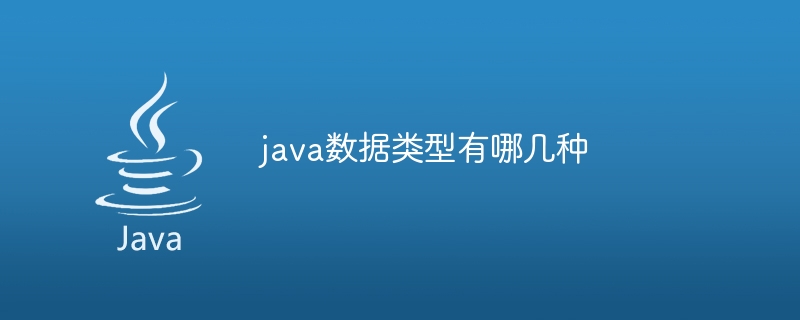
There are two types of Java data types, namely basic data types and reference data types. Basic data types include numeric and Boolean types, while reference data types include classes, interfaces, and arrays. Detailed introduction: 1. Numeric variables are used to store integers and floating point numbers. Java provides four integer types and two floating point number types. These basic data types occupy a certain number of bytes in memory and have fixed values. Scope; 2. Boolean variables are used to store Boolean values, that is, true or false. In memory, Boolean values occupy one byte and so on.

The operating system for this tutorial: Windows 10 system, DELL G3 computer.
Java data types are divided into two categories: basic data types and reference data types. Basic data types include numeric and Boolean types, while reference data types include classes, interfaces, and arrays.
1. Basic data types:
1. Numeric type: Numeric type variables are used to store integers and floating point numbers. Java provides four integer types (byte, short, int, long) and two floating point types (float, double). These basic data types occupy a certain number of bytes in memory and have a fixed range of values.
2. Boolean type: Boolean type variables are used to store Boolean values, that is, true (true) or false (false). In memory, a Boolean value occupies one byte.
2. Reference data type:
In addition, Java also provides a special type of data-string (String). A string is a sequence of characters used to store and manipulate text data. Strings are immutable in Java, that is, once a string object is created, its contents cannot be modified.
Choosing the correct data type is crucial to writing efficient and robust Java programs. Depending on the nature and size of the data that needs to be stored, choosing the appropriate data type can save memory and make your program run more efficiently. For example, for situations where a large number of integer values need to be stored, using the int type may be more efficient than using the float or double type; and for situations where decimals need to be accurately represented, the double or float type should be used instead of the int type.
Understanding and mastering the data types in Java is the basis for writing high-quality Java programs. Choosing the appropriate variable type according to actual needs can effectively manage memory and improve program performance and readability.
The above is the detailed content of What are the java data types?. For more information, please follow other related articles on the PHP Chinese website!
